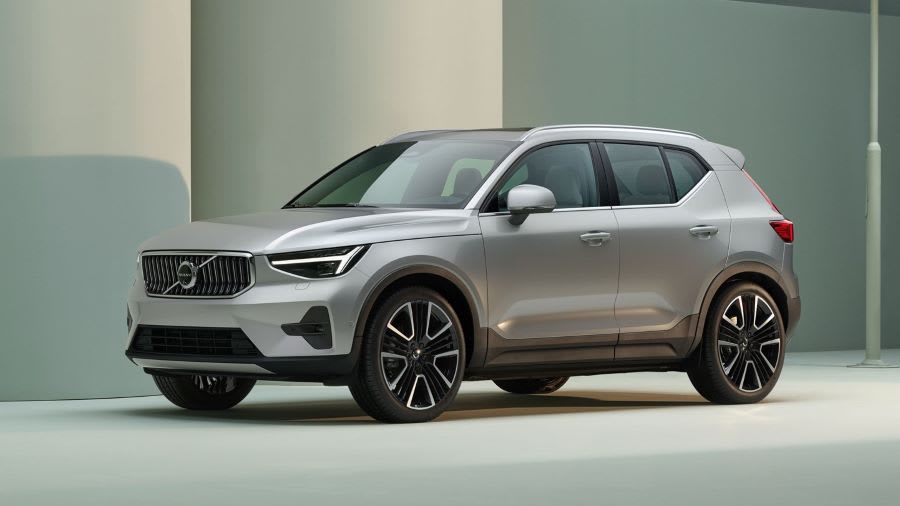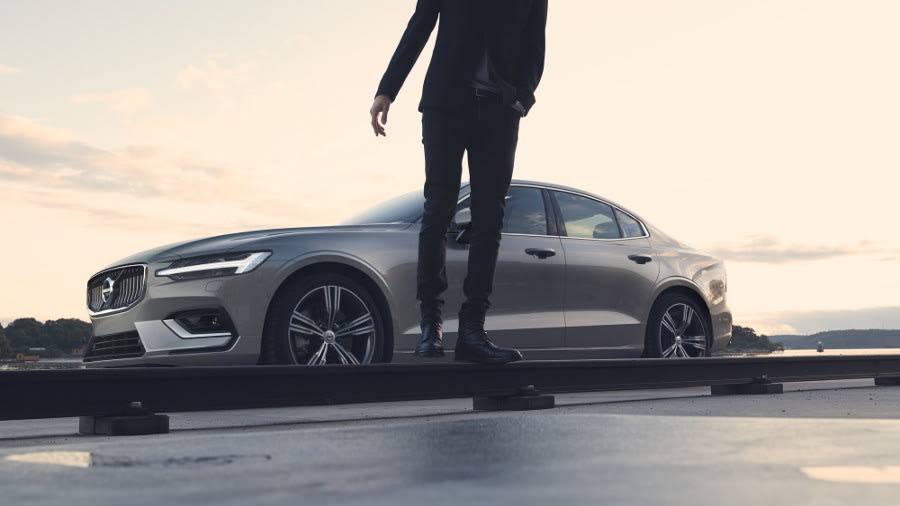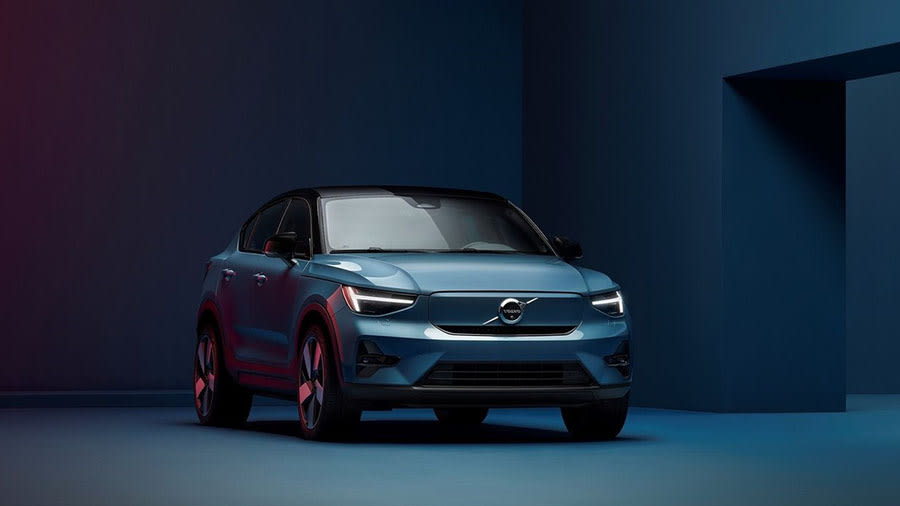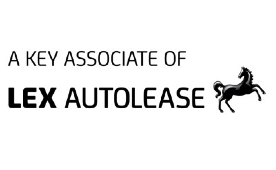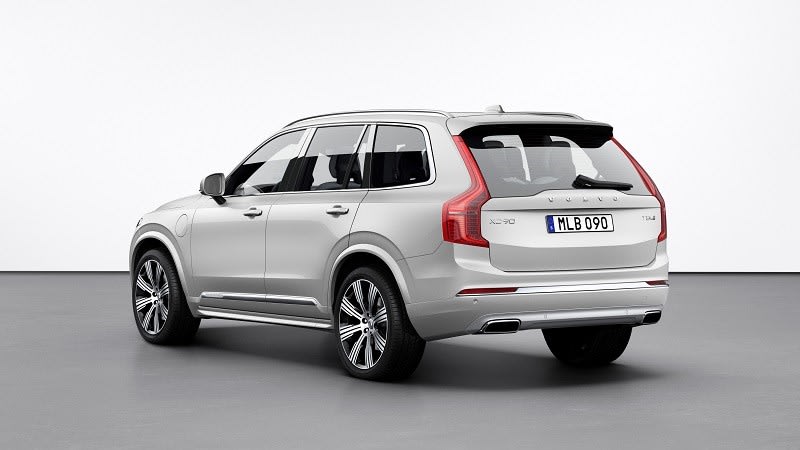
Volvo XC90 T8 Recharge Review

Introduction
With Scandinavian countries leading the way when it comes to environmental activism, we probably shouldn’t be surprised to see Volvo leading plug-in hybrid development. Every car in the Swedish company’s range is now available with some form of hybrid power, allowing you to save fuel and, if you’re a company car driver, to keep your tax rate low.
The XC90 flagship SUV is no exception to this, offering a 2.0-litre petrol engine backed up by electric power. The combination is generally serene and it fits well with the stylish Volvo’s relaxed, soothing character.
Review Sections
Select's rating score* - 4.2 / 5
At a Glance
No matter what’s under the bonnet, the XC90 is a fabulous luxury SUV, offering plenty of space, plenty of style and plenty of quality. If you’re in the market for a luxurious family vehicle, few things will do the job better.
The plug-in hybrid powertrain only adds to the car’s quiet Scandi image, but it’s far from the best hybrid system out there. We much prefer the smoother six-cylinder units found in the BMW X5 45e or the Cayenne E-Hybrid. However, if space, comfort and practicality rank above sportiness in your estimation, the XC90 is the natural choice. And let’s face it, 390hp is never going to feel too underwhelming.
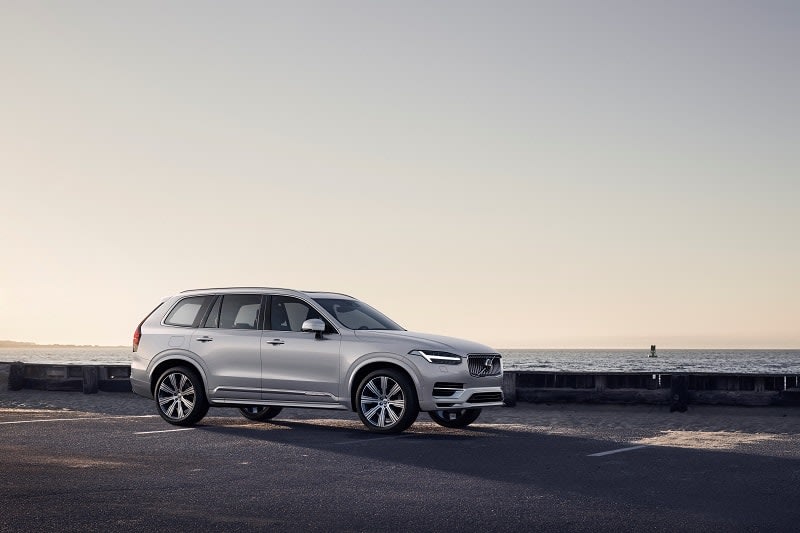
But despite the power on offer, you’d never call the XC90 sporty – even in the more aggressive-looking R-Design trims – so we’d stick with the Inscription models that look smart and give you plenty of luxury features. Inscription Pro is the dream, offering everything you could wish for, but the mid-range Inscription has pretty much everything you need.
Key Features
The XC90 has practicality on its side, and there’s plenty to be said for leasing a huge 4x4. Even with all seven seats in place, there’s enough room in the boot for your weekly shop, and you can really fit seven adults in the cabin. Though quite why you’d take seven adults to the supermarket is anyone’s guess.
Anyway, it’s an important point because the plug-in hybrid versions of the BMW X5, Range Rover Sport and Audi Q7 are all available solely in five-seat form. If you want a big SUV and you need it to be a plug-in hybrid, this is your go-to choice.
However, its practicality extends to more than just the seating arrangements. Volvo has also fitted plenty of clever kit such as the parking ticket holder on the windscreen and the flip-up grocery bag holder in the boot floor. It’s as though someone who had children designed this car, making it the very best family bus it could be. And that has worked a treat.
Performance & Drive
The sole ‘Recharge’ plug-in hybrid version of the XC90 is the T8 AWD. That combines a 2.0-litre petrol engine with a battery and electric motor system to give you a combined 390hp. The system, which allows the battery to be charged either from a plug or by using the petrol engine, also permits a real-world all electric range of just over 20 miles between charges.
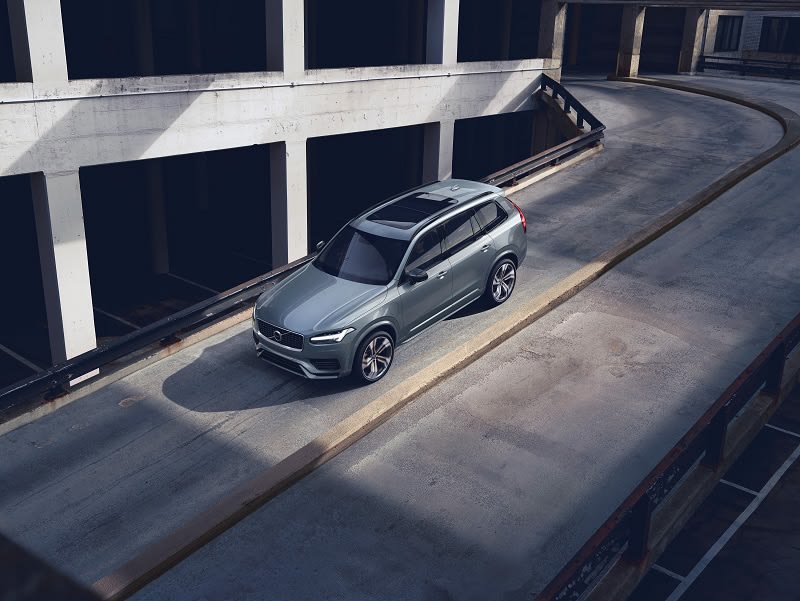
That’s useful for making short journeys, but the electric motor also serves to provide power to the rear axle, giving the T8 all-wheel drive. That makes it quite capable in off-road situations, thanks to the adequate ground clearance and impressive traction. It isn’t a Land Rover, but it’s still more than good enough for most customers’ needs.
It’s certainly as quick as any customer might have hoped. With all that power on board, it will sprint from a standstill to 60mph in just 5.5 seconds and it’ll do 112mph at full chat. That’s going to be a bit annoying if you ever use the German motorway network, but it’s perfectly sufficient pretty much anywhere else.
Not that the XC90 is a sporty car in any way, shape or form. With such a tall body and a kerb weight of around 2.4 tonnes, this is a lumbering beast of burden. It feels massive on country roads, and the combination of weight, body roll and overly light steering mean you won’t want to fling it around a back road.
The XC90 is best enjoyed as a comfy cruiser, and it excels in that regard. The motorway ride is supremely comfortable – particularly if you go for high-end air suspension – and despite the massive wheels, it’s composed around town. A few harsh bumps will make their presence felt, but this is generally incredibly comfortable.
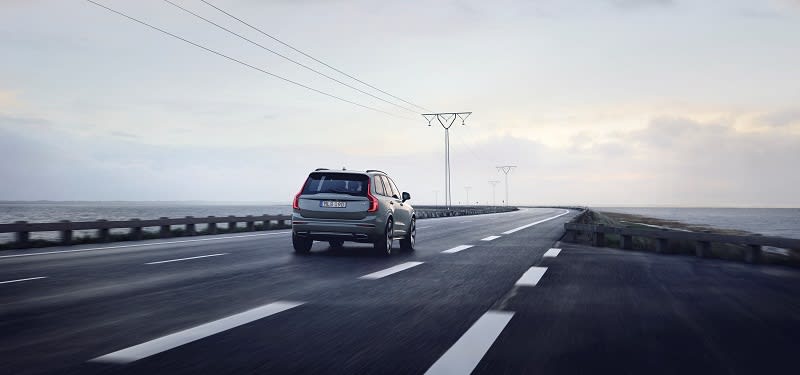
It’s quiet, too, with the electric motor keeping things hushed around town while the 2.0-litre petrol engine fires up with barely a whisper. There is a bit of noise from the tyres at speed, but refinement is generally very good. However, the four-cylinder engine drones a bit when it’s pushed hard, and that kind of ruins the premium feel. Squeezing that 390hp output from the engine feels like a chore, whereas the 3.0-litre six-cylinder engines in the BMW X5 45e and Porsche Cayenne E-Hybrid feel much more capable and cultured.
Running Costs & Emissions
As you’d expect, the plug-in hybrid XC90 boasts some impressive economy figures. You’re looking at a realistic 20- or 25-mile all-electric range, and the official efficiency test suggests you’ll manage more than 100mpg. The truth, however, is somewhat more dependent on your circumstances.
Plug-in hybrids work best when you do mostly short journeys around town and charge the batteries regularly. If you do that, you can use these cars as electric vehicles for large parts of the week, with the petrol or diesel engine simply offering flexibility on the odd occasion when you do a long drive.
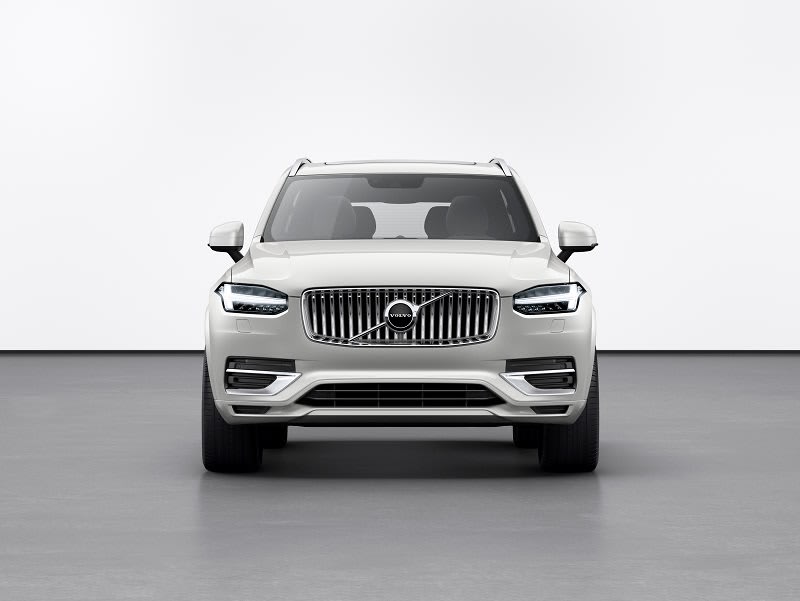
The XC90 is true to that, and you’re probably looking at around 30mpg if your lifestyle doesn’t really suit the technology. Okay, that’s pretty good economy from such a large vehicle, but you’d probably be better with the 2.0-litre diesel engine, which returns between 37.1 and 41.5mpg on the official test. If you regularly do medium- or long-distance trips with few short hops, the diesel might be the engine for you. If you’re a company car driver, on the other hand, the T8 will almost certainly be your XC90 of choice. Emissions figures vary from 61 to 76g/km depending on the version, so your Benefit-in-Kind (BiK) tax bill is unlikely to be enormous. In fact, you’re looking at between 16% and 19% tax, depending on which variant you opt for.
In comparison, a diesel XC90 will be more efficient on long journeys, but the 178-199g/km emissions make it much more expensive to tax. You’ll be looking at a 37% bill no matter which version you choose, and that’s a big difference.
Interior & Technology
This is where the XC90 shines brightest. The cabin is a work of Scandinavian art, perfectly portraying the car’s character with a very clean and simple design. Buttons have all but disappeared from the dash, with just a handful on the centre console and a couple beneath the enormous portrait-orientated touch screen. The steering wheel and indicator stalks are a bit busy, but as minimalist cabins go, this is up there with the best.
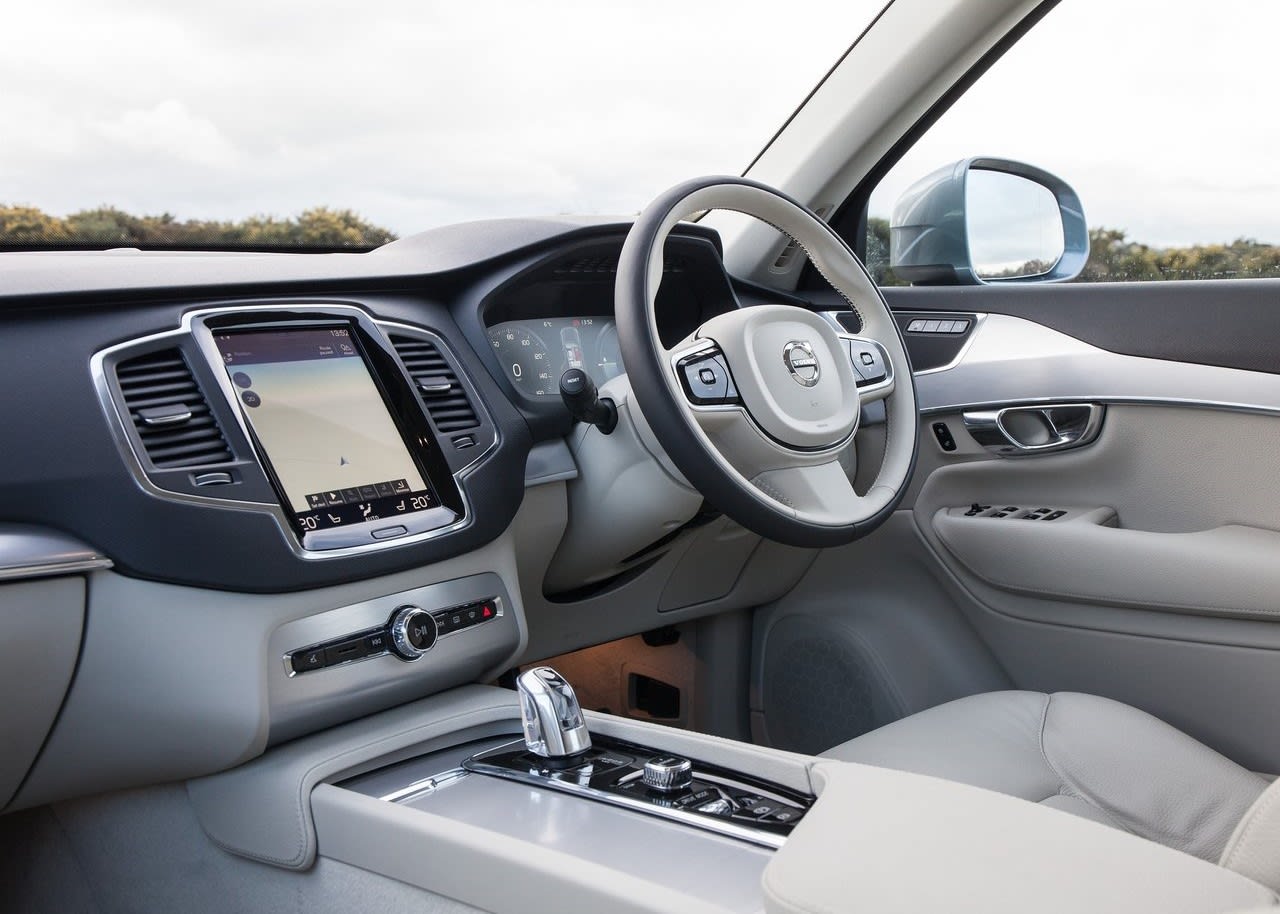
The materials on show are all fabulous, and the design is definitely more Swedish sauna than Ikea. As is the build quality. This car has clearly been built by engineers, rather than your angry uncle who only knows how to wield one tool: the hammer. Joking aside, the fit and finish is brilliant, and it’s enough to remind us that Germans don’t hold a monopoly on quality. This is every inch the premium product. Part of the reason why the Volvo’s cabin is so good is the standard of technology on display. You can’t migrate all the buttons into a touchscreen and put all the information on a digital instrument cluster if the screens in question aren’t up to the job. See a modern Peugeot for details.
In the XC90, you get a simple, clear instrument cluster that makes the transition away from conventional dials very easy, while the portrait touchscreen is your portal to controlling the car. Not only does the system include all the conventional radio, navigation and infotainment tech, but it also houses the climate control and some of the buttons to control the hybrid system. If you want to turn the temperature up, there’s an icon in the bottom right of the screen. Want the engine to charge the batteries? Swipe across and find the right ‘button’ in the list.
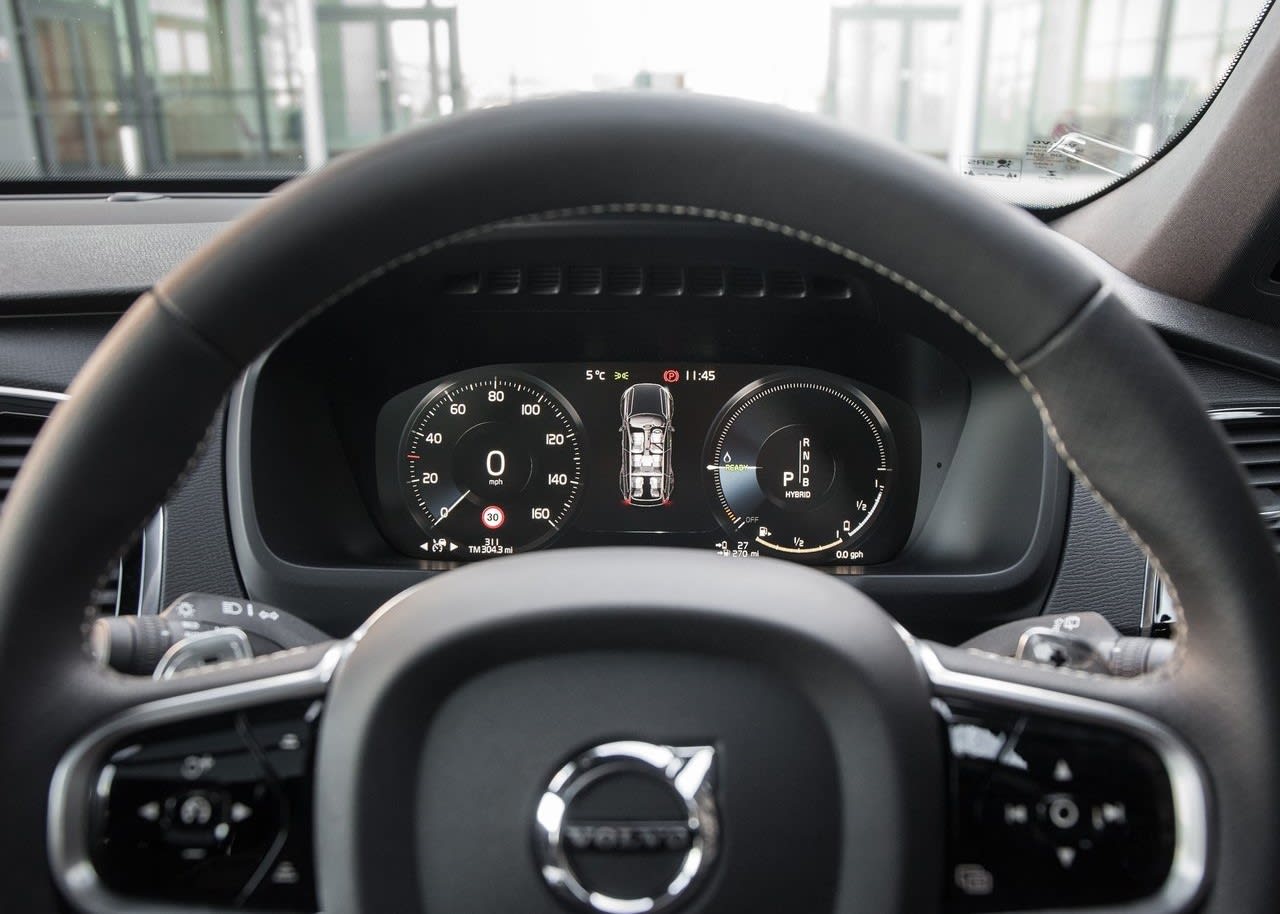
In fairness, the touchscreen isn’t perfect. The navigation system is a bit fiddly and the display is starting to age slightly, but the screen is responsive and it’s usually quite logically laid out. Invest a little time in getting used to it and you won’t have any problem.
Unless, of course, you prefer to use the Android Auto or Apple CarPlay smartphone integration technology. Both systems are great, giving you access to some phone functions through the car’s touchscreen. The technology is only standard on high-end models, so if that equipment is important to you, make sure you check whether it’s included before signing on the dotted line.
Practicality & Boot Space
The XC90 is enormous, and with great external dimensions comes a cavernous interior. Unlike some plug-in hybrid versions of large SUVs, the XC90 still has seven seats. They aren’t massive and getting in isn’t always easy, but they’re more than adequate for short journeys – as long as your passengers aren’t especially tall. For kids, however, they’ll be brilliant, and that makes the XC90 a great family bus. Your kids and their friends will have huge amounts of room in the back, while the adults enjoy the ample head- and elbow-room found up front.
If you have to carry adults, you will manage to carry six passengers, although the centre seat in the middle row isn’t especially comfortable. But for a short hop to the pub or your local football team’s stadium, it’ll do the job.
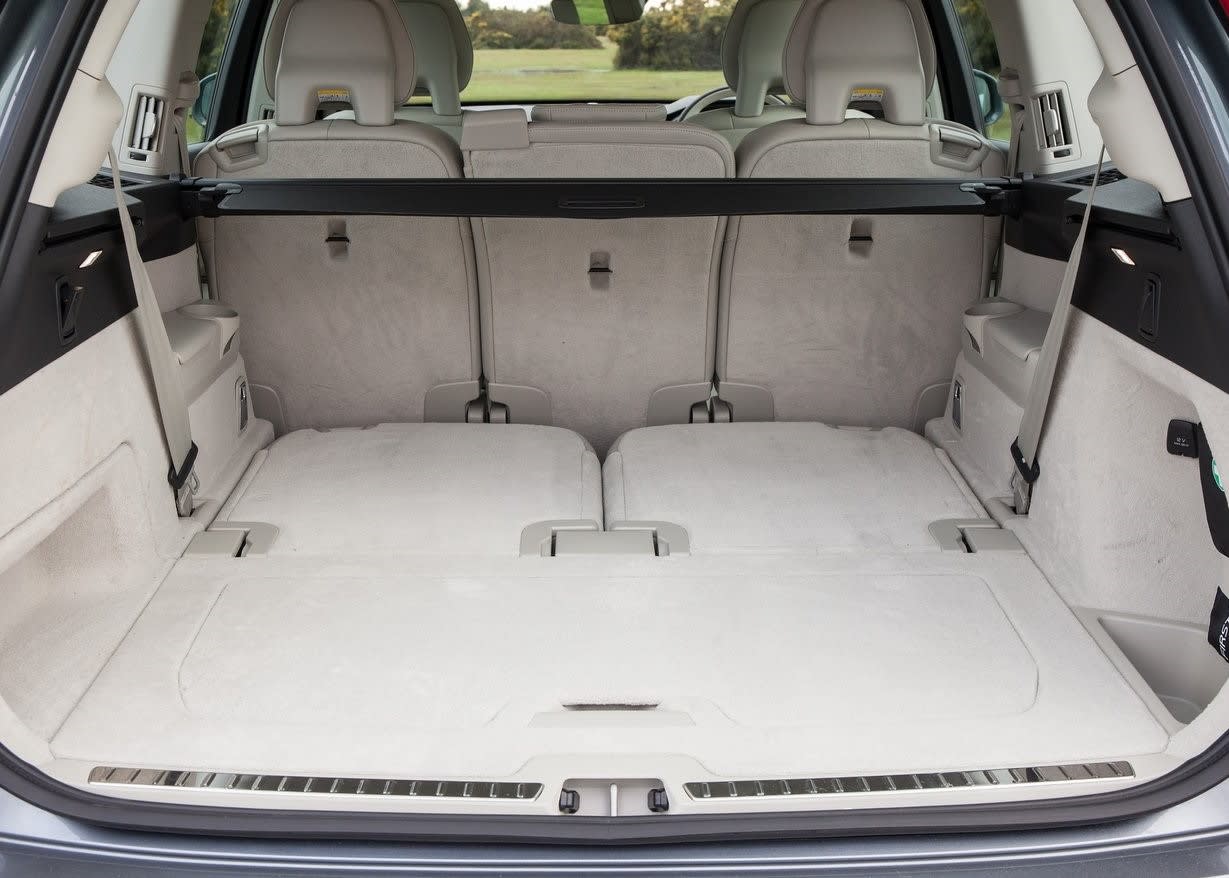
Further back, the boot is huge. According to Volvo, you get 262 litres of space with all seven seats in place, and that’s more than you find in a Volkswagen Up!. Fold the third row of seats away (a fairly simple task) and you’ll get a massive 680 litres of luggage space. An X5 45e gives you just 500 litres.
If that’s still not enough, you can dump the second row of seats, too, freeing up an enormous 1,816 litres of space if you fill the car up to the roof. That’s way more than you’ll get in an X5 or a Range Rover Sport.
And because it’s a Volvo, you also get a power-operated tailgate as standard and there’s a handy flip-up cargo partition. With an elasticated tie-down, it’s great for carrying shopping bags or for keeping muddy wellies upright in the boot. As is so often the case with Volvo, it’s a very simple solution for a lot of problems.
Safety
Volvo has a reputation for safety, so it’s no surprise that the XC90 is among the safest family SUVs you can lease. The Euro NCAP crash test awarded it five stars, but even that high score doesn’t really do justice to the safety of this car. Admittedly, the test has changed since 2015, when the XC90 was tested, but it scored 97% for adult occupant protection, 94% for safety assistance tech and 87% for child occupant protection.
In comparison, the BMW X5 scored 89% for adult occupant protection, while the Mercedes-Benz GLE scored 91%. Neither car got anywhere near the Volvo in terms of assistance tech, although the GLE did pip the Volvo in terms of child occupant protection, scoring an impressive 90%.
We hope you’ll never have to make use of the Volvo’s passive safety equipment – airbags and crumple zones and the like – but it’s good to know you’ve got Isofix child seat mountings in the rear and a wealth of technology helping you to keep accidents at bay.

All XC90 Recharges come with an automatic emergency braking system that hits the middle pedal for you if you fail to slow for hazards including other vehicles, street furniture and pedestrians. It’ll even stop for cyclists and large animals. You also get blind-spot monitoring tech that tells you when a vehicle is in one of the blind spots over your shoulder, while cross-traffic alert warns you of approaching cars when reversing out of parking spaces.
And all that comes in addition to adaptive cruise control that maintains a safe distance to the vehicle in front, and lane departure technology that steers you back into your own lane if you drift across the white line without indicating.
Options
Volvo’s trim levels follow a slightly unorthodox structure, with XC90 Recharge customers essentially getting a choice of two themes. You can have the Inscription models, which are the more luxurious, premium versions with lots of chrome, or you can have the sportier R-Design variants.
If you go down the Inscription path, you start out with the Inscription Expression model, with its 19-inch alloy wheels, digital driver display and nine-inch portrait touchscreen. Leather upholstery is also standard, along with four-zone climate control and a cooled glovebox, as well as satellite navigation and heated front seats. You get automatic LED headlights, a power-operated tailgate and automatic lights and wipers, too.
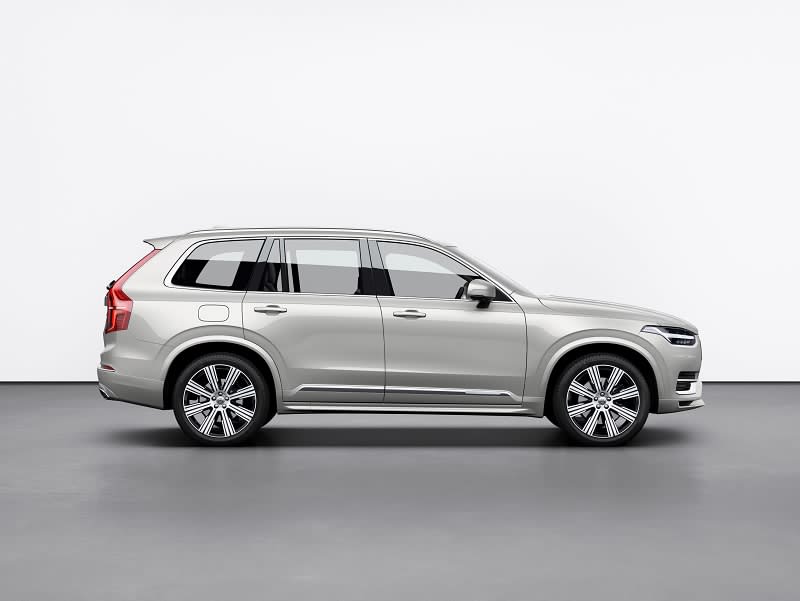
Moving up to the Inscription model gets you 20-inch alloy wheels and smarter leather, not to mention a slightly chintzy Orefors Crystal gear selector and ventilated front seats. The upgrade also gets you chrome trim on the steering wheel, some extra cabin illumination and integrated sun curtains in the rear.
The Inscription line-up tops out with Inscription Pro guise, which gets a heated steering wheel, smartphone integration technology and 21-inch alloy wheels. The top-of-the-range model also benefits from a head-up display, a premium sound system and massage technology in the front seats.
Alternatively, the R-Design range kicks off with the standard R-Design, which comes with sports seats upholstered in a mix of leather and nubuck. The car also gets gloss back exterior trim accents, 20-inch alloy wheels and dark roof lining, plus sports pedals, dark-tinted rear windows and a sports steering wheel.
Upgrading to the R-Design Pro gets you a heated steering wheel and smartphone integration, plus the inevitably enormous 22-inch alloy wheels, a head-up display and the Harman Kardon premium sound system.
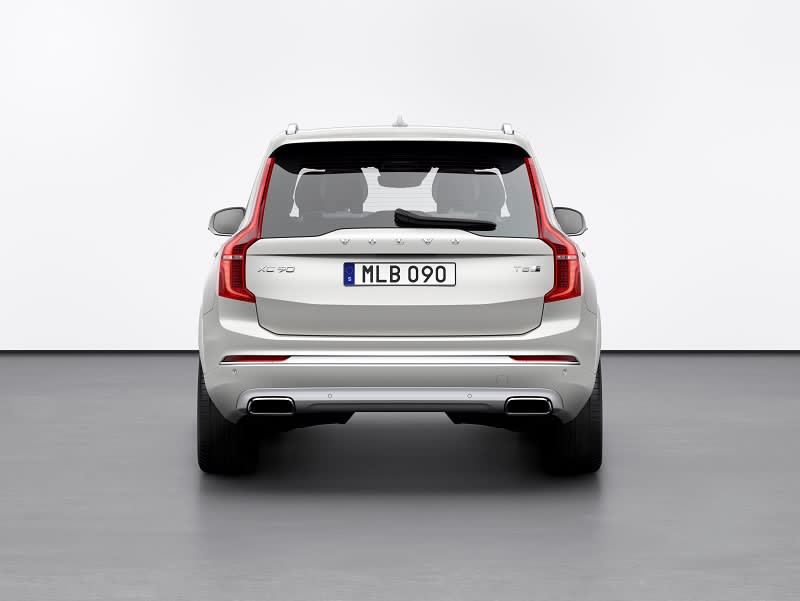
The colour palette is subdued – don’t expect any bright oranges or vivid yellows – but it’s classy all the same. There are a few browns, greys and silvers in there, as well as a kind of khaki called Pine Grey and a soft Denim Blue.
Aside from colour schemes, the most desirable option is probably the Climate pack, with its heated rear seats, heated windscreen and heated steering wheel. However, the Lounge pack will also appeal thanks to its panoramic roof and air “cleaner” system, not to mention its upgraded sound system.
Rival Cars
Plug-in hybrid power is becoming ever more common across the large SUV market, so the XC90’s list of competitors seems to grow by the day. The big players include the BMW X5 45e, which comes with one of the best plug-in hybrid systems we’ve seen. Not only does it have plenty of zero-emission range, but the six-cylinder petrol engine is far smoother than the four-cylinder units found elsewhere. It’s also fitted to an X5, which is one of the best driver’s cars in this section of the market.
But it isn’t quite as good as the Porsche Cayenne, which comes with a choice of two hybrid powertrains. You can have the 3.0-litre V6 E-Hybrid model or the 4.0-litre V8-powered Turbo S E-Hybrid. Both models are set up with performance in mind, so they feel sporty, rather than serene, but what do you expect from a Porsche? Whichever you choose, you’ll be getting a well built, high-quality product that’s brilliant on the road.
If neither of those cars take your fancy, you could always look at the Mercedes-Benz GLE 350de, which breaks with tradition by using a 2.0-litre diesel engine in its plug-in hybrid system. That makes a lot of sense, giving you extra economy when the engine is running, but diesel engines are hardly flavour of the month these days. If it suits your lifestyle, though, you’ll find the GLE a stylish and spacious companion.

The Range Rover Sport P400e PHEV also uses a 2.0-litre engine, although it’s powered by petrol. It’s a desirable car and hugely capable off-road, but the 2.0-litre engine is very small for such an enormous 4x4.
Which is why Audi has gone down the same route as BMW and sister brand Porsche, fitting a 3.0-litre six-cylinder petrol engine. You get a choice of two power outputs, and you get the solidity and style of that Audi interior.
But when it comes to style, there can be just one winner. Yes, the Bentley Bentayga is the most luxurious plug-in hybrid SUV going, and it uses much the same system as the Porsche. It isn’t cheap, but the craftsmanship on show is exemplary and the Bentley badge will draw plenty of punters in.
Verdict & Next Steps
Around six years since it was first introduced in the UK, the XC90 remains one of the best large SUVs you can lease. The plug-in hybrid powertrain may not be as good as BMW’s, but it still gives the XC90 a quiet, refined character that sits well with its calm, Nordic vibe. It’s a lovely, lovely thing to waft around in. Add in some fuel- and tax-efficient environmental credentials and it’s a compelling proposition for customers in need of a big, seven-seat 4x4.
Where to next?
View latest Volvo XC90 T8 Recharge leasing deals - guide price from £586.42 per month inc VAT**
Looking for a great leasing deal? Check out our incredible range of car lease deals
New luxury SUV? Read our latest Reviews and find the right model for you
Want to know more about leasing? Take a look at our comprehensive Leasing Guides
Interested in everything motoring? Why not catch up on all the latest Car Leasing News.
*Score based on Select’s unique meta score analysis, taking into account the UK’s top five leading independent car website reviews of the Volvo XC90 T8 Recharge
**Correct as of 08/06/2021. Based on 9 months initial payment, 5,000 miles over a 48 month lease. Initial payment equivalent to 9 monthly payments or £5277.83 Ts and Cs apply. Credit is subject to status.
